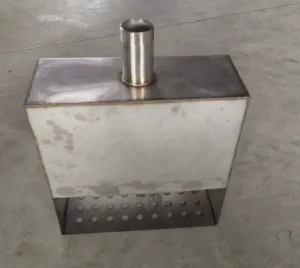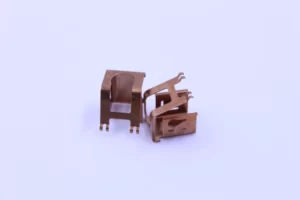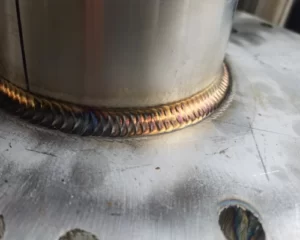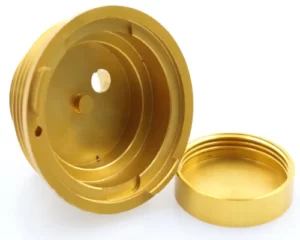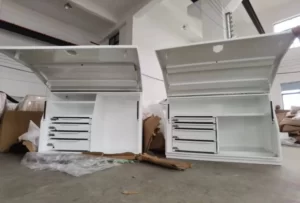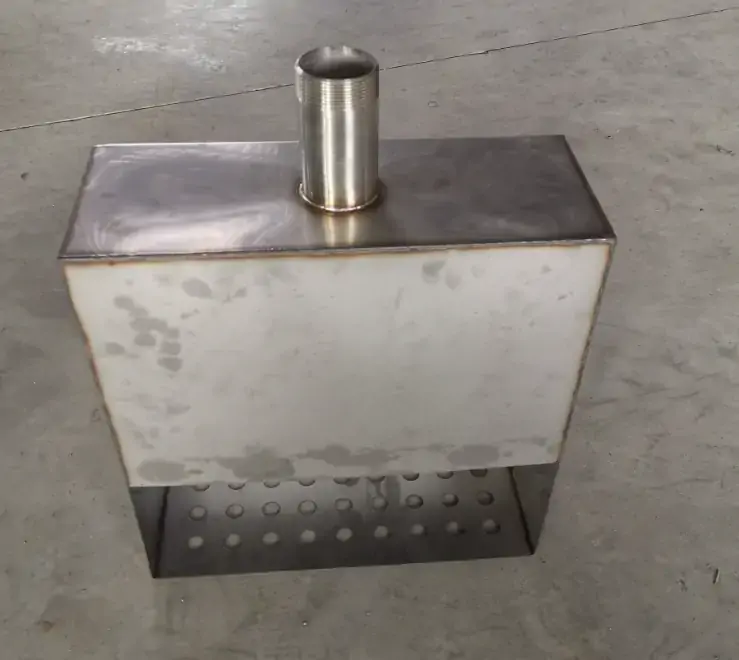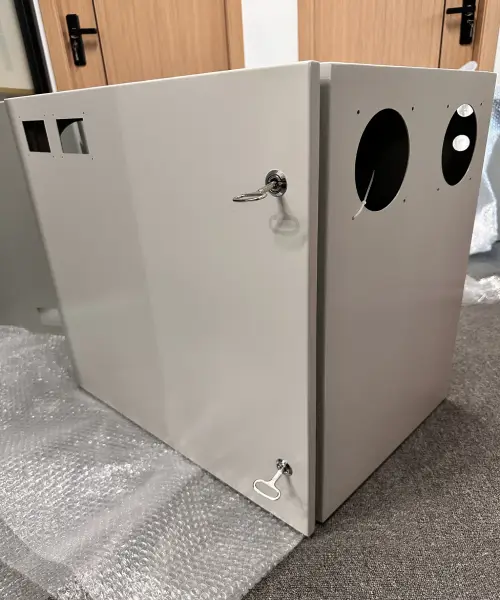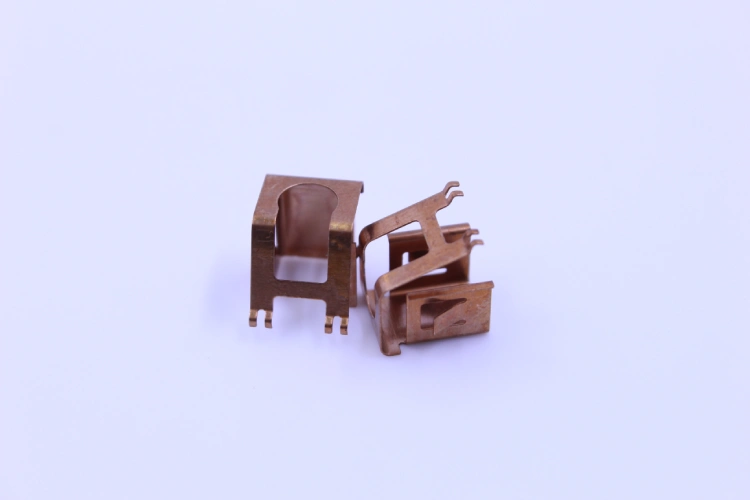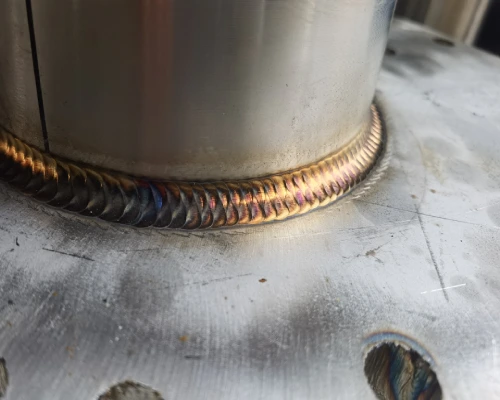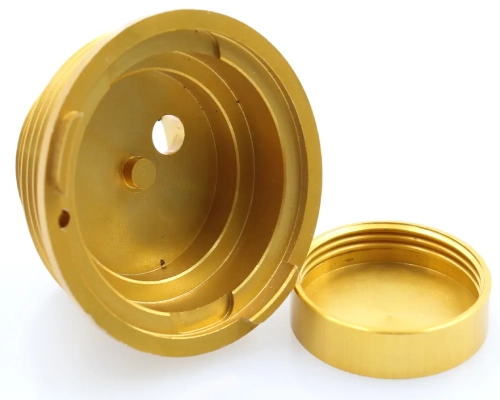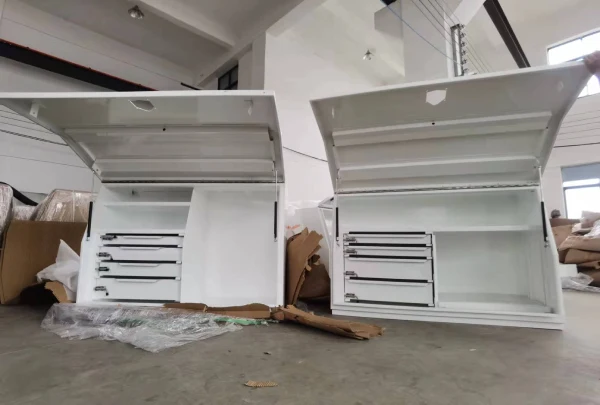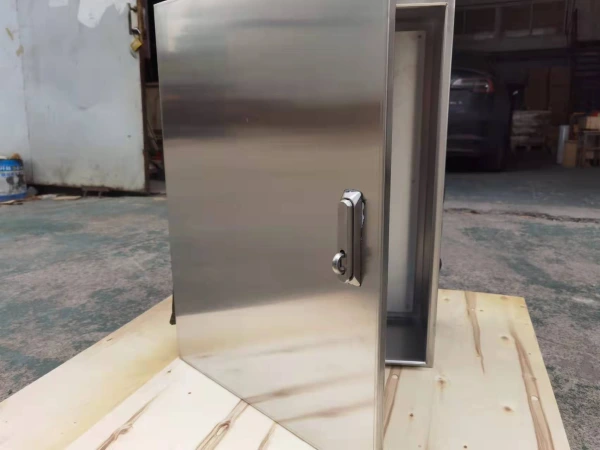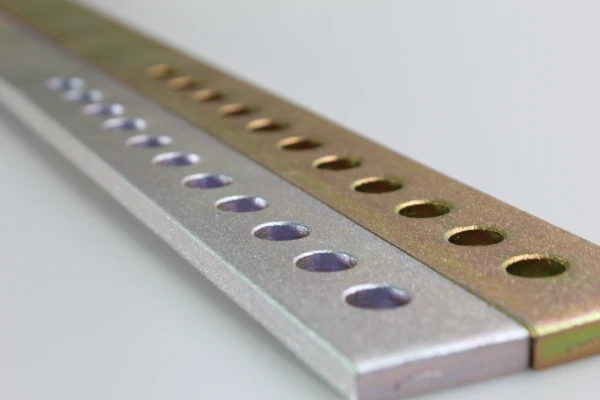What is Custom Metal Fabrication?
Custom metal fabrication is a manufacturing process that involves cutting, bending and forming, welding or relying on metal molds to extrude models of metal materials into final metal products with complex structures. Custom metal fabrication processes are categorized into many different metal fabrication processes depending on how the raw material is processed. Examples include: additive metal fabrication, subtractive metal fabrication, isometric metal fabrication, and molded metal fabrication.
Most custom metal products are made from one or more series of metal parts that are welded and spliced, or threaded and riveted together. More cost-effective custom metal fabrication process solutions can be selected based on different types of raw materials, such as sheet metal, bar metal, liquid metal solutions, and other metal raw materials such as metal tubing.
Its core values are:
- Realize efficient transformation from raw materials to complex structural metal parts.
- Control the microstructure of metal materials and enhance the mechanical properties of metals.
- Balance the most reasonable cost-effectiveness with the feasibility of manufacturing technology.
- Meet the service life of customized metal products in harsh environments.
- Meet a variety of use scenarios and realize the required product functionality.
- Possess artistic aesthetics to enhance the product's visual appeal.
Supro Mfg Specializes in One-Stop Custom Metal Fabrication Supply Services
Most custom metal products are made from one or more series of metal parts that are welded and spliced, or threaded and riveted together. More cost-effective custom metal fabrication process solutions can be selected based on different types of raw materials, such as sheet metal, bar metal, liquid metal solutions, and other metal raw materials such as metal tubing.
Supro MFG is a specialized metal fabricator of industry parts with a variety of metal fabrication shops, and we handle a wide variety of custom metal product projects for contractors, equipment manufacturers and distributors for complex or high-volume manufacturing. We have industry-leading positions and manufacturing technologies in sheet metal enclosures, sheet metal cabinets, sheet metal brackets, metal box, precision CNCmachining, precision aluminum alloy extruded boxes, and shaped metal spinning housings, and we use our advanced metal fabrication equipment to supply products to high-end industries, such as the solar energy, energy storage and power supply cabinets, the military, aerospace, computers, robotics, medical device and automotive manufacturing industries.
Our metal fabrication shop can utilize multiple processes to create the final product. Secondary processes such as deburring, polishing, coating, and painting are provided for the product. Typically, secondary processes are performed to improve the appearance and functionality of a product, or to improve the longevity and corrosion resistance of a metal material for utility in a variety of demanding environments.
This article describes the selection of appropriate metal fabrication methods and considerations for custom metal fabrication work:


Types of Metal Fabrication
The key point regarding the manufacturing of customized metal products is the selection of an appropriate manufacturing process or a combination of multiple manufacturing processes. Depending on the geometry of the designed part, the intended use of the product, and the intended raw material are all references for selecting a metal fabrication process.
Supro MFG can quickly provide you with a range of customized metal part manufacturing solutions based on our extensive manufacturing experience, technical expertise, and manufacturing resources, and can optimize your design based on the manufacturing process to help you achieve the most optimal project results and significant economic benefits.
Optional common metal manufacturing processes are as follows:
- Metal casting
- Metal Cutting
- Deep drawing stamping
- Sheet metal bending
- Metal Forging
- Extrusion
- CNC Machining
- Metal Stamping
- Shearing
- CNC Punching
- Welding
- Riveting
- Spinning
- Metal 3D printing
- Friction Welding
Custom Metal Casting
Custom metal casting is a manufacturing process in which molten metal is poured into metal molds or molds of other materials and left to cool and harden into the shape of a desired complex structure.
Suitable for a variety of structures, the metal manufacturing process is well suited for mass-produced parts, as well as metal parts with complex structures, and the reuse of the same molds can economically produce castings in complex shapes and a variety of sizes.
Metal casting properties include:
- mobility, liquid metal filled with casting capacity;
- shrinkage tendency, from liquid to solid volume contraction, easy to produce defects such as shrinkage holes, and linear dimensional contraction, affecting the casting of the final dimensional accuracy;
- thermal cracking tendency, there are some metals and alloys are prone to cracking and segregation tendency during the casting process, and so on.
There are several different types of casting:
- Die casting, (high pressure casting & low pressure casting)
- Precision lost wax casting, (investment casting)
- Sand casting.
- Water glass casting
- Gravity Casting
Metal casting properties include:
- mobility, liquid metal full of casting capacity;
- shrinkage tendency, from liquid to solid volume contraction, easy to produce defects such as shrinkage holes, and linear dimensional contraction, affecting the casting of the final dimensional accuracy;
- thermal cracking tendency, some metals and alloys are prone to cracking and segregation tendency in the casting process.


Sand Casting
The adaptability of sand casting is very wide, small pieces, large pieces, simple pieces, complex pieces, single pieces, large quantities can be used. Sand molds are more heat-resistant than metal molds, such as copper alloys and ferrous metals and other materials with high melting points are also used in this process. When the need for complex designs or for large-scale metal manufacturing, sand casting is the best choice.
Molds for sand casting generally include: wooden models, aluminum molds, resin sand molds, and so on.
Casting offers from different casting suppliers are not the same, mainly due to differences in the technical level of the casting workers and the stability of the quality, but in many casting processes are the most economical and efficient, in small quantities and large production, the price advantage is particularly prominent.
Die Casting
Die casting is the pressing of liquid metal into a steel mold consisting of two mold cavities by pressure from a die casting machine. In die casting, the injected metal is subjected to high pressure and fills the entire mold cavity until it solidifies and cools. Because of its die casting equipment can be realized at high speed to complete the casting process and other advantages, is widely used in a variety of fields.
But die casting is only applicable to the better fluidity of non-ferrous metals, such as: casting aluminum alloy (adc12.), zinc alloy, etc.
Gravity Casting
Gravity casting relies on gravity rather than external pressure to pour molten metal into a mold. Due to its unique molding method cast custom metal parts are stronger and have a higher density than parts molded by die casting. Gravity casting is especially suited for product configurations where custom cast parts have internal inserts or are difficult to release from the mold.
Lost Wax Casting
This is a precision casting casting process, the structure of the product shape through the special wax to copy, and then rely on silica sol, ceramics and other high-temperature-resistant materials wrapped in the outer layer of the wax model, through the high temperature so that the wax melted, high-temperature-resistant materials form the shape of the product structure, the melting of the metal liquid can be both in the cavity, solidification molding, the metal parts not only have a wax model of the precision dimensions owned by the wax model, but also has a smooth outer surface similar to ceramics. Widely used in: military, aerospace, water conservancy, medical, food and other high-end manufacturing industries.
Custom Metal Cutting
The process of cutting metal into characteristic shapes and patterns or creating smaller shaped metal parts.
These include laser cutting, water jet cutting, electric scissors, and plasma arc cutting.
Of these cutting processes, laser cutting creates a more precise sheet of metal and is very economical and efficient, with CNC turnarounds that can achieve tolerances of 0.02-0.2mm.
The other cutting processes are widely used for cutting thicker sheet metal and are generally used as a pre-cutting process for parts, although many artists prefer to use flame cut parts with cut textures for creating sculptures or artwork.



Custom deep drawing stamping
Deep Drawing stamping is a manufacturing process in which a shaped or other form of a metal material is formed by applying pressure externally to the metal sheet without exceeding the metal material's resistance to deep drawing and ductility.
Generally, without heat it is called cold drawing, and when the depth of the product is greater than the radius, the process is called deep drawing, and is often used to make products such as containers and housings in round tubular or box shapes.
Drawing uses a tensile force to pull metal into and through a tapered mold. The die stretches the metal into a thinner shape. Drawing is usually done at room temperature in a process called cold drawing, but the metal workpiece can be heated to reduce the force required.
This process is considered “deep drawing” when the depth of the final product is equal to or greater than its radius. It is commonly used in sheet metal fabrication to turn sheet metal into hollow cylindrical or box-shaped pieces.

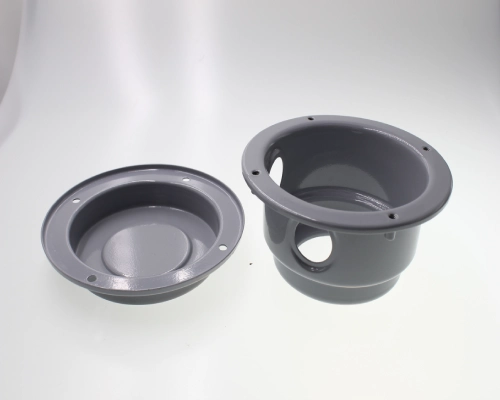
Custom Sheet metal bending
Relying on the mold to apply pressure to the metal plate, so that the metal plate quickly in accordance with the predetermined angle of deformation bending, we usually use CNC bending machinery, can be set through the CNC program to design the bending angle and size.
If you find that the metal plate bending fracture, first of all, we should consider whether the material tensile strength is too low, the second reason may be because of the bending coefficient is wrong, we should know that the thickness of the metal plate and the bending angle presented by the degree of roundness is the mutual influence, when the degree of roundness is too small material is over-folded, the occurrence of fracture, in simple terms, that is, K = t/T, in which t is the thickness of the neutral layer, T is the thickness of the sheet metal. The value of the K factor is usually greater than 0 and less than 1, which is a constant.
Of course, in the process of bending and processing often encountered a lot of can not change the complex design, need to customize the mold or use other bending technology, which requires a very rich bending experience.
The bending K-factor is a key factor in determining the quality of a bent metal part, get the technical knowledge in the article (Sheet Metal Bending Manufacturing Guide: How to Determine the K-Factor).
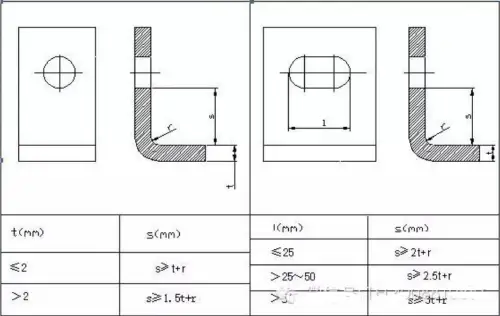
Custom Metal Forging
Forging is a manufacturing process that relies on great compressive forces to shape a product, typically the ancient technique of forging knives, which in the Cold War era was accomplished by continually pounding the heated metal until it took the shape of a weapon.
In modern times, where manufacturing technology is developing rapidly, we generally use high frequency coils to rapidly heat the metal material to a semi-molten state. Then we rely on a forging press to squeeze the metal into a membrane cavity to get the designed metal forged part.
Finishing with metal at room temperature is called cold forging. Forging can also be done when the metal is heated from slightly above room temperature to below the recrystallization temperature of the metal and this particular process is known as warm forging.
When the metal is heated to its recrystallization temperature (which varies from metal to metal), the process is called hot forging.
By virtue of whether or not it relies on mold shaping it can also be classified as, die forging and free forging.
Custom aluminum extrusion
In the extrusion manufacturing process, the workpiece is forced through or around an open or closed die.
When forced through an open or closed die, the diameter of the workpiece decreases to the cross section of the die. When pressed around the die, a cavity is formed within the workpiece. Both processes typically use a metal block or cylinder (billet) as the workpiece and a ram for impacting. The resulting cylindrical product is usually wiring or piping. The die cross-section can have different shapes to produce differently shaped parts. Extrusion can be used in a continuous manner to create very long workpieces or in a semi-continuous manner to create many shorter workpieces.
Impact extrusion, also known as cold extrusion, is performed at room temperature and increases the strength of the part, making it stronger than the original material. When enough force is applied to the appropriate metal, it begins to flow into a usable shape, much like the movement of a viscous liquid. Cold extrusion is typically used in steel metal fabrication.
Hot extrusion is done at higher temperatures to prevent the metal from hardening and to make it easier to pass through the die. It is commonly used in copper fabrication, as well as to make custom aluminum extrusion parts.

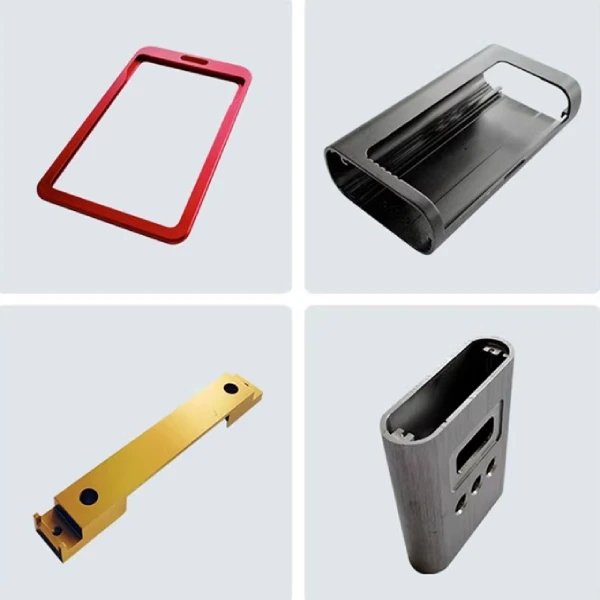
Custom CNC Machining
CNC machining is a subtractive manufacturing process in which metal materials are continuously cut and sculpted by metal tools to end up with smooth-surfaced, precision-sized metal parts, which can be categorized according to the type of cutting into
There are many different machining processes, including drilling, turning and milling, and grinding.
Turning uses a lathe to rotate the metal while the cutting tool moves in a linear motion to remove the metal along the diameter, resulting in a circumferentially symmetrical part or threaded profile. Cutting tools can have different angles to create different shapes. It can be done manually or using a CNC lathe. CNC machining is often used when part measurements must be very precise.
Milling uses a rotating multi-point cutting tool to gradually remove material from a workpiece until the desired shape is achieved. In this process, the metal is slowly fed into the rotating cutting tool, which moves over the stationary metal, or the workpiece and tool move relative to each other. This process can be done manually or using a CNC milling machine. Milling is usually a secondary or finishing process, but it can also be used as the sole method of fabricating metal from start to finish. Different types of milling include face milling, plane milling, angle milling, par milling, and form milling.


Custom metal stamping
Precision metal stamping is a cold working process in which metal sheets are power-driven by stamping equipment to be formed by force in a mold. This process is mainly used in automotive parts, household appliances and other industrial fields, and is characterized by fast single-piece molding (1 second to 1 minute) and high surface accuracy, which makes it suitable for mass production. Its cost structure is manifested in high mold cost but low single-piece cost, and the material applicability covers carbon steel, stainless steel, aluminum-magnesium alloy and other metal plates.
- Production efficiency: the shortest single molding time is only 1 second, suitable for assembly line operation!
- Precision control: mold molding can guarantee ± 0.05 mm dimensional tolerance.
- Requirement of batch quantity: Due to the high cost of mold development, more than 10,000 pieces are needed to be economical.
Processing steps
- Plate fixing: Position the metal plate on the mold base .
- Stamping: The punch drops vertically and forces the sheet metal inside the mold .
- Workpiece removal: the part is removed to await the next trimming and sanding process .
- Post-processing: secondary operations such as trimming and sanding are carried out.
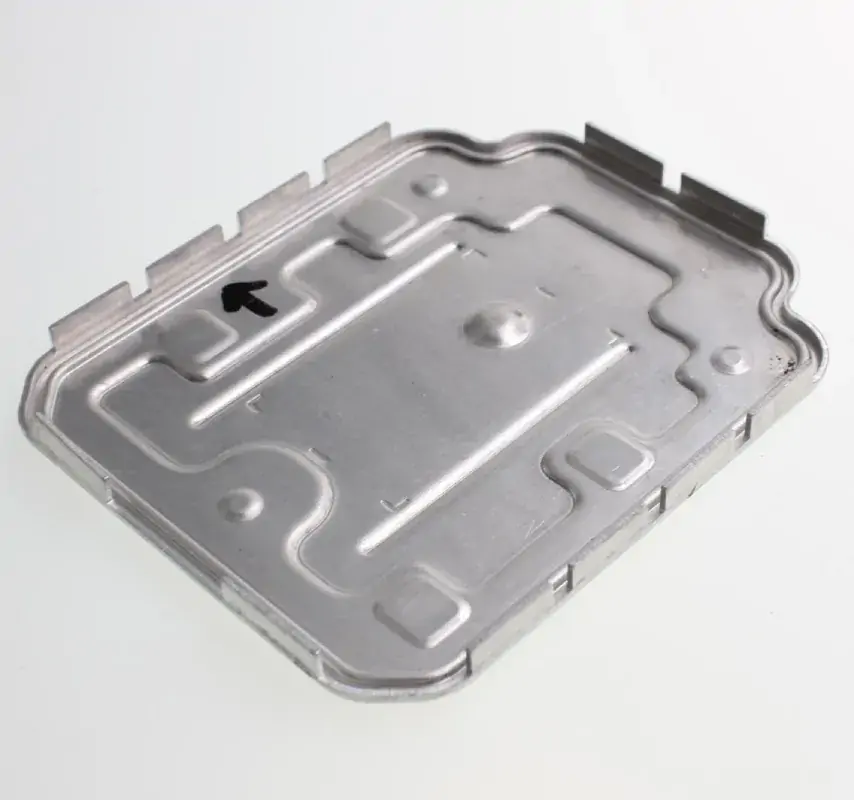

Custom metal Shearing
This type of metal fabrication is accomplished by combining two tools to achieve a long, straight cut, where one tool is positioned above the metal and the other is positioned below to apply pressure. The upper blade presses the metal downward onto the stationary lower blade and fractures it.
The fracture then spreads inward for complete separation. The edges of the cut are usually burred. It is ideal for cutting smaller lengths and different shapes of material because the blades can be mounted diagonally to reduce the force required.
Custom Metal CNC punching
CNC punch press, short for digitally controlled punch press, is an automated machine tool equipped with a programmed control system. The control system is capable of logically processing a program with control codes or other symbolic instructions and decoding it so that the press moves and processes parts. Compared with traditional stamping, CNC punching machine has the advantages of: high precision, large processing range, complex shape parts, automation, simple operation, etc. It is suitable for round holes, square holes, waist-shaped holes and various shapes of curved contours, and it can also be processed with special techniques, such as shutters, shallow drawing, countersinking holes, flanging holes, reinforcing bands, embossing and so on.
- Shutters,
- Shallow drawing,
- Countersunk holes,
- Flap holes,
- Reinforcement,
- Embossing
Custom Sheet metal embossing
Metal stamping presses cast, punch, cut and form sheet metal. Sheets up to 1/4 inch thick are molded into specific shapes and sizes. Presses used for metal stamping can create a wide variety of products and can perform a range of operations including: blanking, metal stamping, and four-slide molding. Minting (as the name implies) can be used to make coins, but it also has other uses, such as making parts for electronics. Four-slide molding combines various stamping and forming processes to create more complex products, and is particularly effective for smaller parts.

Custom Metal welding
In welding, two or more pieces of metal are joined together by heat and pressure. This is a popular process because pieces of metal can be any shape or size. The four commonly used welding processes are: 1. Stick or Arc Welding; 2. MIG Welding; 3. TIG Welding; and 4. Flux Cored Wire Arc Welding.
Stick welding, also known as Shielded Metal Arc Welding (SMAW), uses a welding rod to generate an electric current in contact with the metal, which creates an electric arc. The high temperature of the arc welds the metal.
Metal Inert Gas Shielded Welding (MIG) or Metal Shielded Arc Welding (GMAW) uses an externally supplied gas and continuous solid wire to protect the metal from environmental factors, resulting in faster, more continuous welding. Shield gas also produces less welding fumes.
Tungsten Inert Gas Shielded (TIG) welding, also known as tungsten tig welding, uses a tungsten electrode rod to produce a short arc to weld heavier metals for heavy fabrication. This method requires a skilled welder as the process is difficult, but can be used for most metal products and complex projects.
Flux Cored Arc Welding (FCAW) is similar in process and equipment to MIG. The wire used contains a core that produces shielding gas, so an auxiliary gas source is not required. This method is more portable than MIG or Stick welding, but cannot be used on thinner metals.
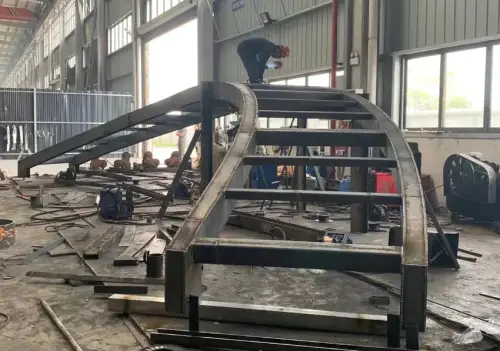
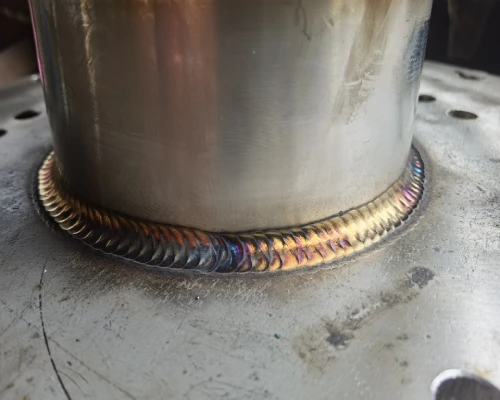
How to Choose a Reliable Custom Metal Fabricator?
Selecting the custom metal fabrication shop or custom metal fabricator that best meets the needs of your project is an important decision that will affect the speed of fabrication, quality of production, and cost-effectiveness of a given project. To help in the selection process, here are some considerations:
Experience: Fast response to your product design is the first way to examine the supplier’s manufacturing experience, rich experience in the supplier will be in a short period of time on the technical standards and requirements of various industries to organize, and timely feedback, put forward their own recommendations and industry consensus, and in advance to avoid ever encountered problems and risks.
In the choice of standard parts will reserve a large number of suppliers, will be easily obtained in the market to optimize the accessories in your product design, for you to save more choice of doubt.
For example, in the process of surface treatment, different materials in different surfaces after the export of the effect presented, whether to meet the application and positioning of your products in the market, is the need for suppliers to have a wealth of manufacturing experience and summarized.
Industry served: Focus on the industry that the supplier focuses on, polishing in an industry, can make the supplier more easily understand your products and project requirements, and even more peer product requirements and stringent quality standards will be added to your project, for you to get a greater optimization of space, and reduce your quality risk. A great supplier will give you the support of an industry resource and save you money on purchasing costs.
Resources: Among the many classifications of custom metal parts machining processes, molding tooling is one of the indispensable elements, and most of the high-efficiency and low-cost batch manufacturing can’t be done without high-quality molds and other molding tools. Therefore, having high-precision mold making capabilities is a key source of a supplier’s strong manufacturing resources.
Relying on handmade equipment can ease your tight project budget, but the risk of inconsistent quality is a risk you can’t ignore.
That’s why we prefer to rely on CNC computer code for high-volume manufacturing.
Many suppliers have specialized departments set up to edit CNC codes. When performing specific production tasks, proper CNC coding allows for more efficient and consistent product production, as well as greater savings in material costs and time costs, and the extremely precise specifications needed to manufacture many custom metal products.
Type of Production: Custom metal fabrication is based on well-established internal operating mechanisms, from product design analysis, DFM, and the scale of a stable production run, whether prototype or long term, small batch or large batch, is one of the core considerations in choosing a custom fabrication service provider with strong capabilities and experience.
Inventory materials: When the supplier has the ability to have strong material and mold stockpiles, we don’t need to worry too much about the risk of contract breakage posed by the supplier, because a large stockpile can represent the manufacturing consumption capacity, as well as the ability to reserve funds, which is a great test of whether the company has a good operational capability.
The most important thing is that usually powerful metal manufacturing suppliers will choose reputable, honest and trustworthy material suppliers for strategic cooperation, which is the best option for buyers, especially in the reserve of special metal materials, all of which can represent the supplier’s reputation, and is worth one of the conditions of field inspection.
Supro MFG Summary.
This article is a brief explanation of the types of custom metal fabrication technology and how to choose a supplier, if you maintain an interest in some of this technical knowledge, you can check out the technical articles within our resources section for more information on related metal fabrication technology.

